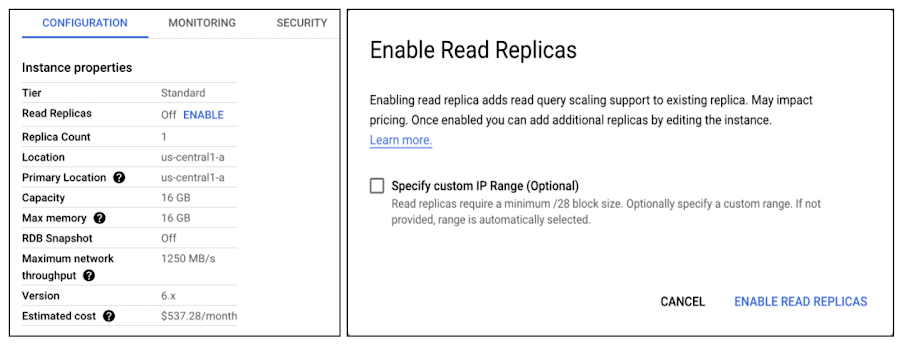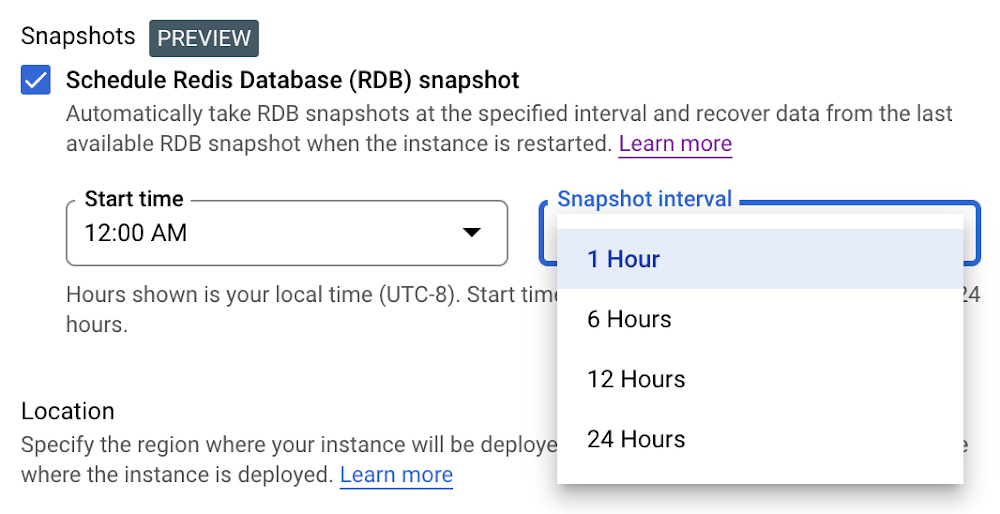What’s new with Cloud Memorystore for Redis
Gopal Ashok
Group Product Manager, Cloud SQL
Cloud Memorystore for Redis provides a fully managed in-memory store that is compatible with open source Redis. Whether you are using Redis for caching, building lightning fast gaming experience or enabling real-time experiences like threat detection, Memorystore for Redis makes it easy to deploy and manage a scalable, highly available, secure Redis service on Google Cloud.
Our team is constantly working to deliver key capabilities that improve the scale, availability and security of the service. Today we will share what’s new with Memorystore for Redis and how you can benefit from these features.
Read Replicas is now generally available
Following the preview launch of Memorystore for Redis read replicas, today we are excited to announce that Read Replicas is now generally available. With Read Replicas and Redis 6, you can achieve more than 10x improvement in read performance compared to standard tier instances on lower versions. Since launching the preview, we have seen many of our customers adopt the feature in order to scale read queries for their applications.
With the GA launch, we have added capabilities that will make it even easier for you to use read replicas. The new capabilities include
Support for enabling read replicas on existing standard tier instances
Support for enabling read replicas for M5 capacity tier instances
Manual failover API support for read replica enabled instances
To configure read replicas on an existing instance, you can simply click enable in the instance details page.


Note: Enabling read replicas can impact pricing, see Memorystore for Redis read replica pricing for additional details. Learn more about getting started with read replicas today.
In some cases your application may require scaling write throughput or storage capacity beyond what a standard tier read replica instance can support. Memorystore for Redis supports architectural patterns that will allow you to scale your writes across multiple instances. To learn more about the patterns and how to implement them, see the blog Scaling Memorystore using Envoy.
RDB Snapshots is available in preview
In addition to our read replicas launch, we are excited to announce that we have also launched the RDB (Redis database) snapshot in preview for our customers.
Memorystore for Redis is used in a wide variety of use cases. For instance, many of our customers load the data using batch processing once a day for lookups and reloading the data may require running pipelines that can take a long time. In such scenarios, having a RDB snapshot can help recover the data quickly in case of catastrophic failures and give you additional protection from a full cache flush.
The task of automating the backup and recovery using RDB snapshot can be cumbersome and error prone. With the RDB Snapshot feature, we will automatically take snapshots at specified intervals and recover from the snapshot as needed. These steps are fully automated for you and can be enabled by a click of a button:


To learn more about RDB snapshots and best practices around using the feature see, RDB Snapshots best practices.
Flushless update for basic tier instances reduces application downtime
We have also launched the flushless update for basic tier instances. When using basic tier instances, applications experience a complete loss of cache data whenever there is a restart of the instance due to scaling, planned maintenance or during an unplanned failure. This activity can be very disruptive for some applications. With this update we will also improve availability of basic tier instances.
Flushless update prevents a full cache flush of a basic tier instance by doing a rolling upgrade of the instance for two important scenarios
Planned maintenance of the service
Scaling the size of an instance
With this feature, the application behavior experienced by basic tier instances for these two scenarios will be similar to what you will experience with a standard tier instance. This means you will experience an application downtime of less than a minute compared to the multiple minutes of downtime you currently experience and no cache flush.
IMPORTANT: This feature will NOT prevent a cache flush during version upgrade or during unplanned outages. So if your application requires a highly available Redis instance you should use standard tier instances.
We are hard at work to deliver the most scalable, available, secure Redis service on Google Cloud and are constantly adding new features. To learn about all the latest feature launches and to keep up with the new launches, subscribe to Memorystore for Redis release notes.




